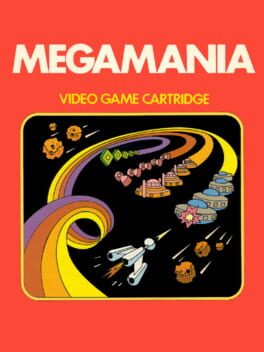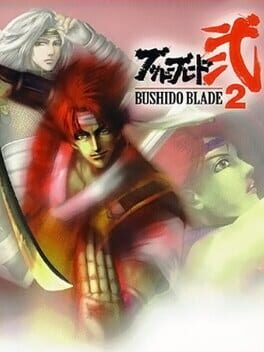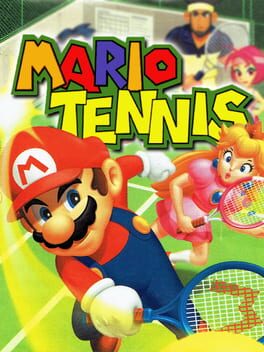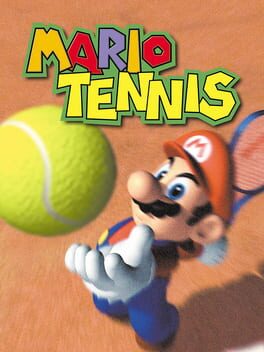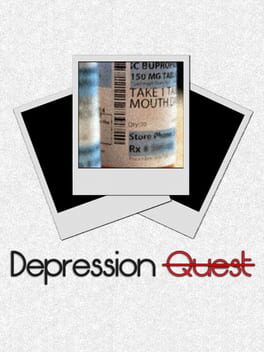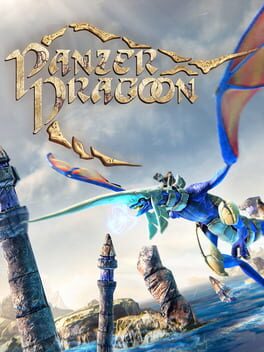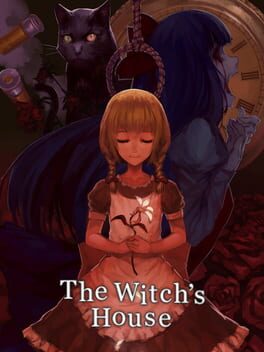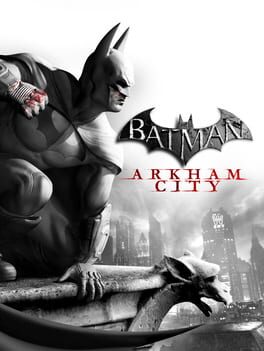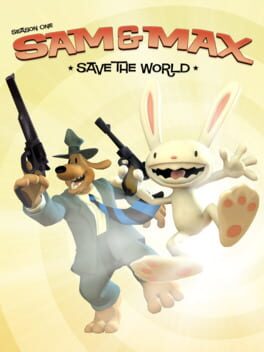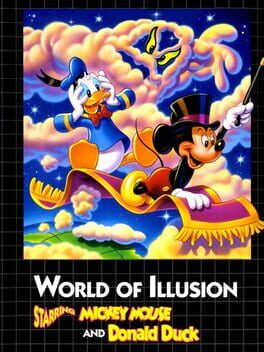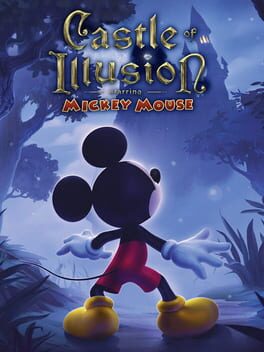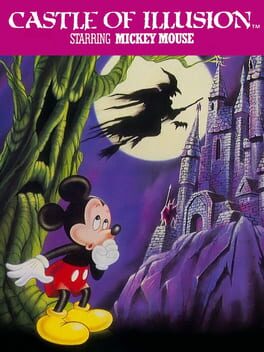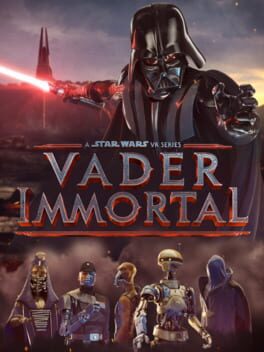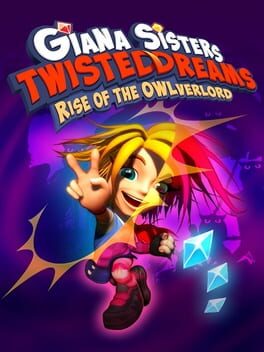MacBlank
1982
I blame the podcast "372 Pages We'll Never Get Back" for this playthrough. Mike Nelson and Conor Lastowka had just started reading Ernest Cline's "Bridge to Bat City", and they glommed onto the oddly specific details of (1) main character Opal playing Atari games with Buddy Holly music in the background and (2) Opal's uncle gifting her a copy of MegaMania before taking her to her mother's deathbed. Figured it was worth giving that a go.
Strictly speaking, developer Steve Cartwright got the idea for this game off Astro Blaster, not Space Invaders. But Space Invaders makes for a fairly easy shorthand these days: fixed-screen space shooter dealing with waves of alien enemies, where each of the enemies is modeled after normal Earth things (in Space Invaders' case, sealife; in MegaMania's case, food and household objects). On top of the waves of enemies moving in different patterns (and some decent stuff there - I like seeing the Space Dice roll through), the gimmick for MegaMania is its Guided Missiles in Games 1 & 2, which follow the player's movements.
This ain't bad, but it is strikingly weird. Straightforward enough to program, since it's basically just applying the player's movement to a second sprite, but pretty different from how a lot of games think of their projectiles. I can't tell you how many times I went to line up a shot and retreat from counterfire, only for this to make my missile weave around the enemy. You kind of have to play less defensively than you do in a lot of these space shooters to make the Guided Missiles work. Kinda different than my usual playstyle, but not bad - gives the game its own identity, firing and tracking down an enemy to line up your shot. But if you're not a fan, you can just pick Games 3 & 4 for Straight Missiles, which completely ignore the player's inputs. Nice to have the option.
I kinda wish there was more of a story to this. It's ultimately pretty inconsequential, since a lot of these early games don't really need a narrative, but I love seeing how much effort Atari would put into manuals of this era (the Swordquests and Yar's Revenge come to mind). I haven't played a lot of Activision's efforts in this era; maybe this was pretty typical for them? Nice of them to actually credit Steve Cartwright, though.
Let the record show, my play improved substantially after I muted the game audio and played Buddy Holly's "Everyday" in the background, so maybe Opal's onto something. Ended up with over 62,000 points, so per the manual, I am eligible to become an official MegaManiac. I expect Activision to send me the official emblem in the mail in 8 to 10 business days.
Strictly speaking, developer Steve Cartwright got the idea for this game off Astro Blaster, not Space Invaders. But Space Invaders makes for a fairly easy shorthand these days: fixed-screen space shooter dealing with waves of alien enemies, where each of the enemies is modeled after normal Earth things (in Space Invaders' case, sealife; in MegaMania's case, food and household objects). On top of the waves of enemies moving in different patterns (and some decent stuff there - I like seeing the Space Dice roll through), the gimmick for MegaMania is its Guided Missiles in Games 1 & 2, which follow the player's movements.
This ain't bad, but it is strikingly weird. Straightforward enough to program, since it's basically just applying the player's movement to a second sprite, but pretty different from how a lot of games think of their projectiles. I can't tell you how many times I went to line up a shot and retreat from counterfire, only for this to make my missile weave around the enemy. You kind of have to play less defensively than you do in a lot of these space shooters to make the Guided Missiles work. Kinda different than my usual playstyle, but not bad - gives the game its own identity, firing and tracking down an enemy to line up your shot. But if you're not a fan, you can just pick Games 3 & 4 for Straight Missiles, which completely ignore the player's inputs. Nice to have the option.
I kinda wish there was more of a story to this. It's ultimately pretty inconsequential, since a lot of these early games don't really need a narrative, but I love seeing how much effort Atari would put into manuals of this era (the Swordquests and Yar's Revenge come to mind). I haven't played a lot of Activision's efforts in this era; maybe this was pretty typical for them? Nice of them to actually credit Steve Cartwright, though.
Let the record show, my play improved substantially after I muted the game audio and played Buddy Holly's "Everyday" in the background, so maybe Opal's onto something. Ended up with over 62,000 points, so per the manual, I am eligible to become an official MegaManiac. I expect Activision to send me the official emblem in the mail in 8 to 10 business days.
1998
Trades the prequel's strong theming for mechanical adjustments. This isn't to say theming isn't present; the story and characters are way more prominent this time around. But it's clear Lightweight was interested in cleaning up the fighting game experience this go-around. Controls are simplified, weapon differences are more pronounced, and certain characters even have unique stances - for example, Gengoro trades the standard katana mid-stance with an iaidō moveset. Which admittedly seems redundant in a game where any strike is a killing blow, but heck if it ain't fun.
I would've thought for sure that POV Mode would've been removed in the sequel, but it's actually been expanded quite a bit. Most of the core modes have a version of it available, and wireframes have been added for the player character. It's kind of a strange effect, since it's not true first-person anymore, but it works once you get used to it. Actually, the player character's tendency to look at the opponent is useful for orienting yourself. The Story Mode bosses are especially obnoxious in POV Mode, though.
Oh, yeah, the story mode's final bosses. In an interesting move, each of the respective final bosses has a unique gimmick: characters of the Shainto school fight a final boss who teleports away from every strike, while the Narukagami students face off against an armored final boss. It's an interesting idea, where the former tests your ability to double-strike (since dude's vulnerable while recovering from his teleport) and the latter tests your ability to literally stab him in the back (as he isn't armored there). Though in practice, it feels like more of an annoying binary check than a proper test. Ah, well.
While I appreciate everything done to streamline this game's experience, I do kinda feel like the deliberate intentionality of the original's been lost. The Bushido Code only really exists from a narrative perspective, since it's not reinforced by the gameplay. There aren't any branching paths, save the Shainto students getting to renege on their whole revenge plot at the last second. Even the buttons have sort of lost their purpose, since you no longer have that cool rise/fall, advance/retreat effect from the first game; parry is done automatically, and the stance-shift button is now separate from the raise up/lower down buttons.
I still like this game, and I think that if you're strictly interested in multiplayer/fighting game shenanigans, this is the one to look to. But I probably prefer the tone of the original a bit more. Theoretically, you'd have a complete winner combining the two games' approaches, but as a little duology, it ain't bad, either.
A few things that made me go WTF - a lady in underwear gunning me down with an M-16, a funky black guy in an afro and shades inexplicably showing up in this bushido story, Black Lotus turning into the Phantom of the Opera and developing a pronounced Irish brogue, a very rude Kilroy showing up on one stage. Game's kinda weird.
I would've thought for sure that POV Mode would've been removed in the sequel, but it's actually been expanded quite a bit. Most of the core modes have a version of it available, and wireframes have been added for the player character. It's kind of a strange effect, since it's not true first-person anymore, but it works once you get used to it. Actually, the player character's tendency to look at the opponent is useful for orienting yourself. The Story Mode bosses are especially obnoxious in POV Mode, though.
Oh, yeah, the story mode's final bosses. In an interesting move, each of the respective final bosses has a unique gimmick: characters of the Shainto school fight a final boss who teleports away from every strike, while the Narukagami students face off against an armored final boss. It's an interesting idea, where the former tests your ability to double-strike (since dude's vulnerable while recovering from his teleport) and the latter tests your ability to literally stab him in the back (as he isn't armored there). Though in practice, it feels like more of an annoying binary check than a proper test. Ah, well.
While I appreciate everything done to streamline this game's experience, I do kinda feel like the deliberate intentionality of the original's been lost. The Bushido Code only really exists from a narrative perspective, since it's not reinforced by the gameplay. There aren't any branching paths, save the Shainto students getting to renege on their whole revenge plot at the last second. Even the buttons have sort of lost their purpose, since you no longer have that cool rise/fall, advance/retreat effect from the first game; parry is done automatically, and the stance-shift button is now separate from the raise up/lower down buttons.
I still like this game, and I think that if you're strictly interested in multiplayer/fighting game shenanigans, this is the one to look to. But I probably prefer the tone of the original a bit more. Theoretically, you'd have a complete winner combining the two games' approaches, but as a little duology, it ain't bad, either.
A few things that made me go WTF - a lady in underwear gunning me down with an M-16, a funky black guy in an afro and shades inexplicably showing up in this bushido story, Black Lotus turning into the Phantom of the Opera and developing a pronounced Irish brogue, a very rude Kilroy showing up on one stage. Game's kinda weird.
2000
I’m given to understand that Camelot’s handheld golf outings are actually quite good. They’re the basis for the excellent Golf Story, after all - little RPG narrative adventures where you build up the player character’s stats over the course of a fun golf training arc. I think Mario Tennis GBC is going for the same sorta thing, but as it turns out, the effect doesn’t translate across sports.
It bears mention before getting into what Tennis GBC does with its campaign: the main issue at play with this game is how rough the AI is. It’s actually extremely easy to cheese it here, particularly in Singles: do a drop shot to one corner of the court, then either smash a return or do a lob shot to the opposite side. The AI naturally responds to the drop shot by running up to hit it, and most AI opponents lack the reach or speed to respond to this trickery. Once you figure out how to do this, and once you fall into a good cadence with this, most opponents are helpless before you.
It turns out that this is sort of a blessing in disguise. Annoyingly, the standard match length in the game’s story is 3 Sets, 6 Games per Set. For comparison, console Mario Tennis I don’t think ever forces the player to do more than 2 game Sets? Starting out the gate with best of 3 Sets and moving into Best of 5 Sets just feels like padding. I don’t even really like it when console Mario Tennis does that, but the gameflow is at least fast enough in console tennis that a climactic 3- or 5-Set Match feels like a well-paced struggle. Everything moves sooooo sloooooowly on GBC.
You also gain EXP and stats from minigames rather than standard tournament play, so you’re expected to intersperse these slow-ass games with slow-ass grinding sessions. In my experience, Mario Tennis GBC ended up being something to play while I had something else on out of necessity; I actually spent a decent amount of time playing this while meeting up with some out-of-state friends, while we were just loafing around and watching TV. I sort of have fond memories of the game for that reason, but boy does the game not earn it.
Speaking of earning things, you have to earn the right to get Mario characters into the game’s primary narrative! You spend most of the time in a rookie-to-success string of tournament arcs amid OCs, and it’s only after you clear the final tournament that you get the privilege of traveling to the Mario World to face off against interdimensional tennis superstar Mario (and Peach, in Doubles). I don’t necessarily object to relegating the Mario cast to legendary figures you have to earn the right to play against, but there ends up being no references to Mario until the credits roll like two or three times, grinding out the campaign. It’s a very curious decision to make in a game called Mario Tennis.
And it’s hardly the most important thing, but since Tennis is such a limited sport compared to Golf, it takes to having stapled-on RPG stats a lot less elegantly than Golf does. I know I would’ve ground things out, but for the life of me I can’t remember what nuance these stats added, on top of making me able to compete with the higher-end foes.
Looking at what the game offers, I’m willing to accept that I’m inherently missing something by playing Mario Tennis GBC in a vacuum, as a lot of its side content ties in to connecting the game with the N64 console version (transferring characters and mini-games, etc). I think of how it goes for Pokémon Stadium, where the intention is that the console game benefits from its connectivity with the handheld game. But Pokémon Stadium still represents a largely complete experience even without the handheld games. I guess Mario Tennis GBC can stand alone, but there's so little to it that if you're not inherently sold on the core loop of playing slow tennis with some dude against easily-duped boofheads, you're just wasting your time. Too bad.
It bears mention before getting into what Tennis GBC does with its campaign: the main issue at play with this game is how rough the AI is. It’s actually extremely easy to cheese it here, particularly in Singles: do a drop shot to one corner of the court, then either smash a return or do a lob shot to the opposite side. The AI naturally responds to the drop shot by running up to hit it, and most AI opponents lack the reach or speed to respond to this trickery. Once you figure out how to do this, and once you fall into a good cadence with this, most opponents are helpless before you.
It turns out that this is sort of a blessing in disguise. Annoyingly, the standard match length in the game’s story is 3 Sets, 6 Games per Set. For comparison, console Mario Tennis I don’t think ever forces the player to do more than 2 game Sets? Starting out the gate with best of 3 Sets and moving into Best of 5 Sets just feels like padding. I don’t even really like it when console Mario Tennis does that, but the gameflow is at least fast enough in console tennis that a climactic 3- or 5-Set Match feels like a well-paced struggle. Everything moves sooooo sloooooowly on GBC.
You also gain EXP and stats from minigames rather than standard tournament play, so you’re expected to intersperse these slow-ass games with slow-ass grinding sessions. In my experience, Mario Tennis GBC ended up being something to play while I had something else on out of necessity; I actually spent a decent amount of time playing this while meeting up with some out-of-state friends, while we were just loafing around and watching TV. I sort of have fond memories of the game for that reason, but boy does the game not earn it.
Speaking of earning things, you have to earn the right to get Mario characters into the game’s primary narrative! You spend most of the time in a rookie-to-success string of tournament arcs amid OCs, and it’s only after you clear the final tournament that you get the privilege of traveling to the Mario World to face off against interdimensional tennis superstar Mario (and Peach, in Doubles). I don’t necessarily object to relegating the Mario cast to legendary figures you have to earn the right to play against, but there ends up being no references to Mario until the credits roll like two or three times, grinding out the campaign. It’s a very curious decision to make in a game called Mario Tennis.
And it’s hardly the most important thing, but since Tennis is such a limited sport compared to Golf, it takes to having stapled-on RPG stats a lot less elegantly than Golf does. I know I would’ve ground things out, but for the life of me I can’t remember what nuance these stats added, on top of making me able to compete with the higher-end foes.
Looking at what the game offers, I’m willing to accept that I’m inherently missing something by playing Mario Tennis GBC in a vacuum, as a lot of its side content ties in to connecting the game with the N64 console version (transferring characters and mini-games, etc). I think of how it goes for Pokémon Stadium, where the intention is that the console game benefits from its connectivity with the handheld game. But Pokémon Stadium still represents a largely complete experience even without the handheld games. I guess Mario Tennis GBC can stand alone, but there's so little to it that if you're not inherently sold on the core loop of playing slow tennis with some dude against easily-duped boofheads, you're just wasting your time. Too bad.
2000
Years ago, on a Super Mario messageboard I used to frequent (Lemmy's Land Forums), we played this elimination game involving like 50 different Mario games. The idea was that each person would "Save" one game, so at the end of the round, the last game to be "Saved" would be eliminated, and play would restart. I dunno if this sort of game is really played much anymore, but it's the sort of thing you used to see all the time on messageboards. Anyway, this one guy really liked the original Mario Tennis - if I remember correctly, his love was based entirely around playable Paratroopa - and would make a point to rush in and "Save" it at the top of each round. It got to a point where "Save Mario Tennis" became an in-joke around the community, and any time Mario Tennis on the Nintendo 64 was mentioned, someone would be quick to "Save" it. Or that just became the name of the game itself: "Save Mario Tennis".
I mention this because, after a few non-starter attempts at unlocking both characters and one finally successful one, I can't really get the adoration for this title.
Mario Tennis is an extremely important Mario game. Since Camelot needed to pad out the roster with Doubles partners, the team got creative with their picks for playable characters. This is the game that introduced Waluigi as Wario's Doubles partner, and while that's not the move I would've made (personally I probably would've stuck Captain Syrup in there - yeah, they're enemies, but that's what Wario deserves), I'd be lying if I didn't say I loved what the lanky loser has become over the years. This is also the game that brought back Princess Daisy and Birdo, elevating these two supporting ladies into fairly prominent roles going forward (as well as cementing the pairings of Daisy/Luigi and Birdo/Yoshi). Playable Boo and Shy Guy would become common sights going forward, but this is where they got their start. Yes, Paratroopa over Koopa Troopa is a fun pull, even if it was probably just made because animating flight is easier than animating walking. The only real non-starter advanced by this game in the roster department is Donkey Kong Jr., since Diddy Kong would make for a far more logical Doubles Partner for DK going forward and Petey Piranha would fill in as the usual fourth Power character - but DK Jr. is a fun inclusion all the same, just someone who wouldn't see much of an expanded role in the future.
But I'll be honest, the roster is the main thing Mario Tennis has going for it. Apart from that, the game is shockingly dry as a tennis simulator. Yeah, it lets you play tennis, and yeah, the characters have some different properties, but that's pretty much it. I guess if you really like regular ol' tennis, this is a decent enough simulator for that, if a bit stiff - I never feel like I have as much control over the ball as I want (but then I mostly play Speed/Power/Tricky characters). Personally, I find the whole thing pretty wanting for some sort of high concept, even if it's just a big aesthetic change in one of the courts. For goodness sakes, all of the unlockable courts are just reskins of the regular court with JPEGs of the Mario cast printed on 'em! Playing this after growing up with Mario Power Tennis, it was a huge disappointment.
The side content is a'ight, but pretty limited, especially for singleplayer. Ring Shot is probably the game at its mechanical strongest, since it teaches the player how to rally, and there's a nice tense cadence to building up points. Piranha Challenge is okay - fun to see the Piranha Plants doing something, even if they're basically little more than pitching machines here.
Bowser Stage is a fun idea and a weird assertion of Mario Kart in a non-Mario Kart setting, but I actually find the items themselves a little lackluster. The issue with using Mario Kart items is that you think they'll do Mario Kart things, so I kept trying to use the Starman to tank hits when it's just a power-up in this game. Shells are probably most interesting, since both lock down where the opponent's able to move, but they can't hold this mode on their own. Actually, it's the stage itself I like best, since it has a gimmick of leaning towards whichever side's weighted down - really would've liked to see more courts experiment with gimmicks like this.
I like the idea of Mario Tennis more than I like what it actually does, I think. Tennis is a sport I like to play, and the idea of stapling Mario characters on in there is a fun idea. I especially like the consequences the game's had on shaping the series, perhaps more than any other non-mainline Mario game outside some of the Mario Karts. But as its own thing? I'd much rather Save a later Mario Tennis.
I mention this because, after a few non-starter attempts at unlocking both characters and one finally successful one, I can't really get the adoration for this title.
Mario Tennis is an extremely important Mario game. Since Camelot needed to pad out the roster with Doubles partners, the team got creative with their picks for playable characters. This is the game that introduced Waluigi as Wario's Doubles partner, and while that's not the move I would've made (personally I probably would've stuck Captain Syrup in there - yeah, they're enemies, but that's what Wario deserves), I'd be lying if I didn't say I loved what the lanky loser has become over the years. This is also the game that brought back Princess Daisy and Birdo, elevating these two supporting ladies into fairly prominent roles going forward (as well as cementing the pairings of Daisy/Luigi and Birdo/Yoshi). Playable Boo and Shy Guy would become common sights going forward, but this is where they got their start. Yes, Paratroopa over Koopa Troopa is a fun pull, even if it was probably just made because animating flight is easier than animating walking. The only real non-starter advanced by this game in the roster department is Donkey Kong Jr., since Diddy Kong would make for a far more logical Doubles Partner for DK going forward and Petey Piranha would fill in as the usual fourth Power character - but DK Jr. is a fun inclusion all the same, just someone who wouldn't see much of an expanded role in the future.
But I'll be honest, the roster is the main thing Mario Tennis has going for it. Apart from that, the game is shockingly dry as a tennis simulator. Yeah, it lets you play tennis, and yeah, the characters have some different properties, but that's pretty much it. I guess if you really like regular ol' tennis, this is a decent enough simulator for that, if a bit stiff - I never feel like I have as much control over the ball as I want (but then I mostly play Speed/Power/Tricky characters). Personally, I find the whole thing pretty wanting for some sort of high concept, even if it's just a big aesthetic change in one of the courts. For goodness sakes, all of the unlockable courts are just reskins of the regular court with JPEGs of the Mario cast printed on 'em! Playing this after growing up with Mario Power Tennis, it was a huge disappointment.
The side content is a'ight, but pretty limited, especially for singleplayer. Ring Shot is probably the game at its mechanical strongest, since it teaches the player how to rally, and there's a nice tense cadence to building up points. Piranha Challenge is okay - fun to see the Piranha Plants doing something, even if they're basically little more than pitching machines here.
Bowser Stage is a fun idea and a weird assertion of Mario Kart in a non-Mario Kart setting, but I actually find the items themselves a little lackluster. The issue with using Mario Kart items is that you think they'll do Mario Kart things, so I kept trying to use the Starman to tank hits when it's just a power-up in this game. Shells are probably most interesting, since both lock down where the opponent's able to move, but they can't hold this mode on their own. Actually, it's the stage itself I like best, since it has a gimmick of leaning towards whichever side's weighted down - really would've liked to see more courts experiment with gimmicks like this.
I like the idea of Mario Tennis more than I like what it actually does, I think. Tennis is a sport I like to play, and the idea of stapling Mario characters on in there is a fun idea. I especially like the consequences the game's had on shaping the series, perhaps more than any other non-mainline Mario game outside some of the Mario Karts. But as its own thing? I'd much rather Save a later Mario Tennis.
2013
This review contains spoilers
I don't really want to have a conversation on this game. At the same time, I have a set of criteria for the games I talk about on Backloggd, and Depression Quest meets them: it's a game I've completed, I know when I completed it, and I am confident of my opinions on it. Actually, while I wouldn't call it a favorite by any means, I did find I ultimately connected with it, enough so that I still catch myself thinking about it now and again. Because of that, it's important to me that I somehow preserve those opinions.
After thinking about it for a while, I've decided I'm just going to present my opinions as isolated bullet points. No further summation, no point I want to drive at, just my naked opinions.
- It was very polite to release this game for free following Robin Williams' suicide
- Presenting choices, then striking them out and blocking the player from selecting them, is an effective analogy for experiencing crippling depression
- The moment where the player character is able to notice his hands shaking as a consequence of his bottled up tension, and that awareness of physical response to mental stimuli, is a familiar turning point for... a lot of things, in my experience
- I appreciate that the player can choose whether to address depression through drugs or therapy. I appreciate as well that neither is more correct, and each respective approach has its own ramifications.
- Adopting a kitten - and thus having another life to care for, as a means of combatting depression - is also familiar.
- I have no desire whatsoever to revisit this game to explore less-than-best endings and see what commentary the game holds there. Having said that...
- I am given to understand that the worst ending explains that the player character has given up on life but is too unmotivated to commit suicide; regardless, no happy ending is possible for him. I don't know if this is the text of the game. This is just what I have read elsewhere. Assuming this is true, I have mixed feelings on this. I do not want anything in this world to contribute to suicide rates, and I respect an artist trying to steer clear of that. At the same time, it would represent the lone pulled punch in a game that otherwise has an extremely frank conversation about depression.
After thinking about it for a while, I've decided I'm just going to present my opinions as isolated bullet points. No further summation, no point I want to drive at, just my naked opinions.
- It was very polite to release this game for free following Robin Williams' suicide
- Presenting choices, then striking them out and blocking the player from selecting them, is an effective analogy for experiencing crippling depression
- The moment where the player character is able to notice his hands shaking as a consequence of his bottled up tension, and that awareness of physical response to mental stimuli, is a familiar turning point for... a lot of things, in my experience
- I appreciate that the player can choose whether to address depression through drugs or therapy. I appreciate as well that neither is more correct, and each respective approach has its own ramifications.
- Adopting a kitten - and thus having another life to care for, as a means of combatting depression - is also familiar.
- I have no desire whatsoever to revisit this game to explore less-than-best endings and see what commentary the game holds there. Having said that...
- I am given to understand that the worst ending explains that the player character has given up on life but is too unmotivated to commit suicide; regardless, no happy ending is possible for him. I don't know if this is the text of the game. This is just what I have read elsewhere. Assuming this is true, I have mixed feelings on this. I do not want anything in this world to contribute to suicide rates, and I respect an artist trying to steer clear of that. At the same time, it would represent the lone pulled punch in a game that otherwise has an extremely frank conversation about depression.
My context for the original is pretty limited, but this sorta feels like one of those where something's been lost in the remake. Granted, as I understand it, the original Panzer Dragoon was very much a title whose significance was rooted in the era of its release: an early must-play title for the SEGA Saturn, ethereal and artistically-driven in a way games generally weren't at that time (heck, on the Saturn alone, NiGHTS into dreams... was still a year out). A compelling showcase of mechanics it was not, particularly in hindsight. These days, so many subsequent rail shooters have developed the genre far beyond the scope of the original Panzer Dragoon.
I guess with that, the idea of a Panzer Dragoon remake is in an unfavorable position. It is perhaps necessary, given how little we've seen of the SEGA Saturn since its heyday and how unlikely we are for SEGA to put out a proper Saturn compilation. But there isn't really a good way to reincarnate this sort of game. The original soundtrack/visuals no longer hold the same effect, so simply having those wouldn't work. Overhauling the art direction loses the original game's identity, particularly since so much of it was rooted in the technical limitations of the Saturn. Arriving at an art style that holds the same effect in modern day that the original had in its era would require a huge budget...
...and what we got was a budget title. Developed in the Unity engine! Unity is a perfectly serviceable game engine, but there's something a little homogenizing about rebuilding a one-of-a-kind video game in a stock engine. It'd be a little like trying to recreate Chrono Trigger in RPG Maker. Could you do so? Perhaps, but the heart and soul of Chrono Trigger lies in the specific way it was presented.
This is all to say - Panzer Dragoon Remake is okay, but it's over and done with pretty quickly. There is novelty to having access to a version of this game in modern day, but I don't really feel like I've gained anything for the experience, just that I can say I've played it now. I think I would've rather had an untouched "museum" release that helped place me in the reality of the original release. Is that asking for too mych? I dunno, but with what we got, I don't feel any less need to look for the original Panzer Dragoon on Saturn now that I've gone through the remake. Seems like we've missed the thrust of the exercise here.
I guess with that, the idea of a Panzer Dragoon remake is in an unfavorable position. It is perhaps necessary, given how little we've seen of the SEGA Saturn since its heyday and how unlikely we are for SEGA to put out a proper Saturn compilation. But there isn't really a good way to reincarnate this sort of game. The original soundtrack/visuals no longer hold the same effect, so simply having those wouldn't work. Overhauling the art direction loses the original game's identity, particularly since so much of it was rooted in the technical limitations of the Saturn. Arriving at an art style that holds the same effect in modern day that the original had in its era would require a huge budget...
...and what we got was a budget title. Developed in the Unity engine! Unity is a perfectly serviceable game engine, but there's something a little homogenizing about rebuilding a one-of-a-kind video game in a stock engine. It'd be a little like trying to recreate Chrono Trigger in RPG Maker. Could you do so? Perhaps, but the heart and soul of Chrono Trigger lies in the specific way it was presented.
This is all to say - Panzer Dragoon Remake is okay, but it's over and done with pretty quickly. There is novelty to having access to a version of this game in modern day, but I don't really feel like I've gained anything for the experience, just that I can say I've played it now. I think I would've rather had an untouched "museum" release that helped place me in the reality of the original release. Is that asking for too mych? I dunno, but with what we got, I don't feel any less need to look for the original Panzer Dragoon on Saturn now that I've gone through the remake. Seems like we've missed the thrust of the exercise here.
2012
Part of a Japanese indie RPG Maker horror trilogy that has long existed in my head, alongside Ib and Mad Father. I know "trilogy" isn't quite right; the only real throughline these games have are similar game engines (Mad Father isn't even in RPG Maker) and translator. And anyway, if we're going by that logic, vgperson has handled way more stuff than just those three games. No matter; the trilogy in my head is Ib, Witch's House, and Mad Father. I played Ib many years ago, and now I've played Witch's House.
The Witch's House is predicated entirely around its ending reveal. There is other interstitial stuff that composes the rest of the experience, but the narrative thrust sits entirely within the ending. It's a good ending reveal, don't get me wrong, but the consequence is that everything leading up to it sort of feels irrelevant. Now, since the game's only an hour or so long, that isn't really that much of a strike against it - but it does make the experience feel lopsided in retrospect.
This isn't to say that the grand majority of the game is without merit. I think as a tonal piece, the game's at its strongest earlier on, when you're just doing some unsettling puzzles and the house is starting to go crazy. The third floor in particular is delightfully dark, with great setup and payoff. On the flipside, I kinda think any of the jump-scare chase sequences come across as ridiculous - particularly that giant skull on the fifth floor - but then I've always thought stuff like Ao Oni was more silly than scary.
Yeah, here's where I admit that indie horror projects like this have never been my bag. When I play one of these, the main thing I'm looking for is mood and tone, not spoopiness. I think, since I highlighted it before, I resonated a lot more with Ib when I played that years ago, since that had a lot more consistent tonality and theming between its gameplay and narrative. Witch's House is fine enough, good for its duration, but it isn't really something that sticks with me outside a couple moments and its ending. Its gameplay moments feel more like a fantasia of horror that only occasionally interacts with the character and story moments. No disrespect if that's the stuff that hooked you onto the game, but it isn't personally my thing.
The Witch's House is predicated entirely around its ending reveal. There is other interstitial stuff that composes the rest of the experience, but the narrative thrust sits entirely within the ending. It's a good ending reveal, don't get me wrong, but the consequence is that everything leading up to it sort of feels irrelevant. Now, since the game's only an hour or so long, that isn't really that much of a strike against it - but it does make the experience feel lopsided in retrospect.
This isn't to say that the grand majority of the game is without merit. I think as a tonal piece, the game's at its strongest earlier on, when you're just doing some unsettling puzzles and the house is starting to go crazy. The third floor in particular is delightfully dark, with great setup and payoff. On the flipside, I kinda think any of the jump-scare chase sequences come across as ridiculous - particularly that giant skull on the fifth floor - but then I've always thought stuff like Ao Oni was more silly than scary.
Yeah, here's where I admit that indie horror projects like this have never been my bag. When I play one of these, the main thing I'm looking for is mood and tone, not spoopiness. I think, since I highlighted it before, I resonated a lot more with Ib when I played that years ago, since that had a lot more consistent tonality and theming between its gameplay and narrative. Witch's House is fine enough, good for its duration, but it isn't really something that sticks with me outside a couple moments and its ending. Its gameplay moments feel more like a fantasia of horror that only occasionally interacts with the character and story moments. No disrespect if that's the stuff that hooked you onto the game, but it isn't personally my thing.
2006
[This is a review of Version 2.2.8, though I also played... I believe Version 2.0...? around 14-15 years ago]
Depending on how you define the term, my favorite Sonic fangames are Sonic Mania and Sonic 2: Special Edition. But assuming you don't count those (and, like, fair), then my favorite is Sonic Robo Blast 2. Without question, one of the greatest games to feature Sonic, over much of the official series.
Honestly, a lot of my appreciation for this game comes from how unlikely it all sounds on a high level. Even knowing how high-octane DOOM can be, I neeeever would've guessed at a well-realized, non-gimmicky Sonic game making sense in that engine. And yet...
I love 3D Sonic, but I'll be quick to point out that the post-Adventure games have pretty different design philosophies from the classic series. Yes, Sonic's always been a spectacle platformer series, but the means by which you get there changes. 2D Sonic places more focus on methodical exploration, with speed being a reward for good play; 3D Sonic encourages speed as often as it can, with speed built into its strongest set pieces. Exploration is traditionally presented as being divorced from speed in 3D Sonic...
(I haven't played Sonic Frontier yet, so no idea how the open world design addresses that)
...which is what makes Sonic Robo Blast 2 so striking. The game very cleanly blends 2D game design into 3D space. Levels are HUGE and expansive to accommodate the player's innate desire to explore, with a huge emphasis on naturalistic or logical environments. Sure, you still have plenty of video gamey obstacles like spinning spike bars and death lasers and such, but there's usually some sort of logical continuity to how the player explores the Zones, which in turn informs the cadence of challenges.
And it's not a complete rejection of 3D Sonic's design, either! A lot of the environmental storytelling you see in some of the Adventure titles and especially Sonic Unleashed, where the progression through biomes and buildings communicates its own adventure, gets teased out in SRB2. "Castle Eggman" isn't just a string of castle-themed rooms. It's a long trek through a forest leading up to the castle, followed by a trip through several rooms and libraries, followed by a run across danger-riddled castle ramparts. "Egg Rock" isn't just a generic space zone, but rather a slow infiltration of a meteor base as the player dives into the heart of Robotnik's stronghold. "Arid Canyon" is more than a generic desert level, it features a race through an abandoned mine and down to a train robbery.
Now, it isn't uniformly this - Greenflower and Red Volcano in particular are largely just biomes without any sort of adventure progression. But then, the game's still under development (even after twenty-five years of continuous work), and plans exist to embellish these levels and add more to boot. So, maybe some day! Even so, even with the game as it is, it's a very easy, very strong recommendation from me. Great stuff.
Miscellany:
- It is insane to me that this Sonic fangame off the DOOM engine spawned a Kart-Racer, which itself spawned a Persona dungeon-crawler. To parse this: a first-person shooter was modded into a third-person 3D platformer, which was modded into a racing game, which was modded into a turn-based RPG. It's hard for me to even wrap my head around that.
- I LOVE THE BOSS OF ARID CANYON. GREAT PULL HOLY CRAP
- Since I played different versions, it was kinda funny watching the plot go from "Eggman blew up a mountain, ANGST" to "Eggman Roboticized a mountain, oh but don't worry, people are okay (or at least will be once you beat the video game)"
- Theming the bonus rounds after NiGHTS into dreams... is a cute touch. Doesn't feel too far off from the realm of possibility, given the inexplicable NiGHTS cameos across some official titles and the Chemical Plant boss from Sonic Mania
- I haven't even played a Dark Souls game, but I love what that little sword-and-fire communicates in Castle Eggman.
- I think I tried the multiplayer once? Got dissed in text-chat for not knowing what I was doing, and decided I was good.
- Sonic's Speed Thok sure is a weirdly-named move, but it's a good compromise for the Homing Attack, itself a compromise for Sonic's speed in 3D. I like how much utility the move gives you, offset by just how much of a commitment it is. Good solution for something to give Sonic, to give him a movement counterpart to Tails' flight and Knux's gliding.
Depending on how you define the term, my favorite Sonic fangames are Sonic Mania and Sonic 2: Special Edition. But assuming you don't count those (and, like, fair), then my favorite is Sonic Robo Blast 2. Without question, one of the greatest games to feature Sonic, over much of the official series.
Honestly, a lot of my appreciation for this game comes from how unlikely it all sounds on a high level. Even knowing how high-octane DOOM can be, I neeeever would've guessed at a well-realized, non-gimmicky Sonic game making sense in that engine. And yet...
I love 3D Sonic, but I'll be quick to point out that the post-Adventure games have pretty different design philosophies from the classic series. Yes, Sonic's always been a spectacle platformer series, but the means by which you get there changes. 2D Sonic places more focus on methodical exploration, with speed being a reward for good play; 3D Sonic encourages speed as often as it can, with speed built into its strongest set pieces. Exploration is traditionally presented as being divorced from speed in 3D Sonic...
(I haven't played Sonic Frontier yet, so no idea how the open world design addresses that)
...which is what makes Sonic Robo Blast 2 so striking. The game very cleanly blends 2D game design into 3D space. Levels are HUGE and expansive to accommodate the player's innate desire to explore, with a huge emphasis on naturalistic or logical environments. Sure, you still have plenty of video gamey obstacles like spinning spike bars and death lasers and such, but there's usually some sort of logical continuity to how the player explores the Zones, which in turn informs the cadence of challenges.
And it's not a complete rejection of 3D Sonic's design, either! A lot of the environmental storytelling you see in some of the Adventure titles and especially Sonic Unleashed, where the progression through biomes and buildings communicates its own adventure, gets teased out in SRB2. "Castle Eggman" isn't just a string of castle-themed rooms. It's a long trek through a forest leading up to the castle, followed by a trip through several rooms and libraries, followed by a run across danger-riddled castle ramparts. "Egg Rock" isn't just a generic space zone, but rather a slow infiltration of a meteor base as the player dives into the heart of Robotnik's stronghold. "Arid Canyon" is more than a generic desert level, it features a race through an abandoned mine and down to a train robbery.
Now, it isn't uniformly this - Greenflower and Red Volcano in particular are largely just biomes without any sort of adventure progression. But then, the game's still under development (even after twenty-five years of continuous work), and plans exist to embellish these levels and add more to boot. So, maybe some day! Even so, even with the game as it is, it's a very easy, very strong recommendation from me. Great stuff.
Miscellany:
- It is insane to me that this Sonic fangame off the DOOM engine spawned a Kart-Racer, which itself spawned a Persona dungeon-crawler. To parse this: a first-person shooter was modded into a third-person 3D platformer, which was modded into a racing game, which was modded into a turn-based RPG. It's hard for me to even wrap my head around that.
- I LOVE THE BOSS OF ARID CANYON. GREAT PULL HOLY CRAP
- Since I played different versions, it was kinda funny watching the plot go from "Eggman blew up a mountain, ANGST" to "Eggman Roboticized a mountain, oh but don't worry, people are okay (or at least will be once you beat the video game)"
- Theming the bonus rounds after NiGHTS into dreams... is a cute touch. Doesn't feel too far off from the realm of possibility, given the inexplicable NiGHTS cameos across some official titles and the Chemical Plant boss from Sonic Mania
- I haven't even played a Dark Souls game, but I love what that little sword-and-fire communicates in Castle Eggman.
- I think I tried the multiplayer once? Got dissed in text-chat for not knowing what I was doing, and decided I was good.
- Sonic's Speed Thok sure is a weirdly-named move, but it's a good compromise for the Homing Attack, itself a compromise for Sonic's speed in 3D. I like how much utility the move gives you, offset by just how much of a commitment it is. Good solution for something to give Sonic, to give him a movement counterpart to Tails' flight and Knux's gliding.
2011
I loved Arkham Asylum, but I only "liked" Arkham City. The deciding factor for me is what I suspect other people really love about City: the open world layout of the titular city. I actually think having an overworld to freely explore de-emphasizes a lot of the tight pacing and level design that I really appreciated in Asylum. Is it fun to be swooping around the city and suddenly find yourself drawn into a subplot involving Jarvis Teech? Sure, I suppose I won't contest that. But most of my experience of the titular city is that it's the no-man's land of video game miscellany. Some thugs to fight, some Riddler trophies to collect, mostly things for the player to distract themselves from the main plotline.
If you're into that, cool, you're probably someone who gets a ton out of what Rocksteady was going for here. If not, well, you don't have to do all that. You can just ignore all the unscripted sequences and bop on over to the next storybeat... at the opposite end of the map. For whatever reason, the game really likes placing a lot of its key locations on opposite ends of the overworld's "V" shape. And at a certain point, swinging back and forth ignoring shouts of distress, I sorta shattered the illusion the first game so meticulously set up and stopped feeling like the Caped Crusader.
Look, my point is, there are a ton of memorable moments to Arkham City, but almost none of them actually take place in the overworld.
But those subareas are quite good! The Cyrus Pinkney Natural History Institute is full of fun rooms and set-pieces. The Mr. Freeze boss fight is incredibly well-designed, even if it isn't particularly subtle ("AH SO BATMAN HAS THE ABILITY TO CRASH THROUGH WINDOWS! NOW I KNOW NOT TO WALK TOO CLOSE TO WINDOWS! YOU CAN'T FOOL ME THE SAME WAY TWICE BATMAN!"). Ra's al Ghul feels like a complete sidetrack, but it's a nice change of pace. The final area also lends itself to some good combat rooms, and the final encounter... well, I kinda think Arkham was 0 for 2 with final bosses, but I like how it ends.
Catwoman's fun, too! Her segments are over and done with pretty quickly, but they make for nice diversions. Sorta wish you could do more with her, but w/e. That fakeout bad ending is quite the shock if you actually go for it.
So, like, I got my issues with Arkham City, but I still think it's a fine enough time. I'm given to understand later Arkhams continue to move further away from what I liked about the first game (I have Arkham Knight, just need to get around to it). That's a bummer for me, but if it's what people like, who am I to say no?
...that GAME OF THE YEAR EDITION "10 OUT OF 10" boxart is still utterly ridiculous, though. Are we in agreement on that?
If you're into that, cool, you're probably someone who gets a ton out of what Rocksteady was going for here. If not, well, you don't have to do all that. You can just ignore all the unscripted sequences and bop on over to the next storybeat... at the opposite end of the map. For whatever reason, the game really likes placing a lot of its key locations on opposite ends of the overworld's "V" shape. And at a certain point, swinging back and forth ignoring shouts of distress, I sorta shattered the illusion the first game so meticulously set up and stopped feeling like the Caped Crusader.
Look, my point is, there are a ton of memorable moments to Arkham City, but almost none of them actually take place in the overworld.
But those subareas are quite good! The Cyrus Pinkney Natural History Institute is full of fun rooms and set-pieces. The Mr. Freeze boss fight is incredibly well-designed, even if it isn't particularly subtle ("AH SO BATMAN HAS THE ABILITY TO CRASH THROUGH WINDOWS! NOW I KNOW NOT TO WALK TOO CLOSE TO WINDOWS! YOU CAN'T FOOL ME THE SAME WAY TWICE BATMAN!"). Ra's al Ghul feels like a complete sidetrack, but it's a nice change of pace. The final area also lends itself to some good combat rooms, and the final encounter... well, I kinda think Arkham was 0 for 2 with final bosses, but I like how it ends.
Catwoman's fun, too! Her segments are over and done with pretty quickly, but they make for nice diversions. Sorta wish you could do more with her, but w/e. That fakeout bad ending is quite the shock if you actually go for it.
So, like, I got my issues with Arkham City, but I still think it's a fine enough time. I'm given to understand later Arkhams continue to move further away from what I liked about the first game (I have Arkham Knight, just need to get around to it). That's a bummer for me, but if it's what people like, who am I to say no?
...that GAME OF THE YEAR EDITION "10 OUT OF 10" boxart is still utterly ridiculous, though. Are we in agreement on that?
The reason why Telltale Games exists, even if it wasn’t their first game to come out. The story goes that a team at LucasArts was handling follow-ups for Full Throttle and Sam & Max Hit the Road, but the projects got cancelled over concerns that there wasn’t a market for adventure games anymore. Key personnel still very much interested in making adventure games bailed on LucasArts and formed Telltale. The goal was always to make an episodic Sam & Max title, but Telltale worked their way up to it, first producing a small tech demo (Telltale Texas Hold ‘Em), then earn capital through a couple easy-to-obtain licenses (Jeff Smith’s Bone, CSI). With money in their pockets and Steve Purchell’s blessing, Telltale took their big swing and produced what is probably Sam & Max’s biggest, best-known incarnation.
…and before we go any further, let us stop to admire the significance of all this. Please, indulge me for a couple paragraphs.
Sam & Max are essentially underground comix characters, created by Steve Purchell…’s brother. When they were kids, Purchell’s kid brother Dave drew these comics of a rabbit and dog detective, and Steve drew over-the-top parodies of them to mess with his brother. Dave gave Steve the rights to these dorkuses as a birthday present one year, and Steve developed them into the verbose, satirical, gleefully insane Freelance Police we know and love today.
The characters debuted in a series of comics, which Purchell published as a side hustle to his day job. Eventually, that day job was to be an animator and illustrator for LucasArts (we have Purchell to thank for the fabulous coverart for titles like Maniac Mansion and Zak McKracken). LucasArts put out a quarterly periodical, to which Purchell started contributing Sam & Max comics… really because he could. The fine folks at LucasArts loved the Freelance Police so much that they started hiding them into games (this is jumping ahead a little bit, but my go-to example is Max inexplicably showing up as a friendly NPC in Jedi Knight). Eventually, someone at LucasArts realized they technically had full rights to the characters, so with Purchell on-board, the studio put out Sam & Max Hit the Road. Then there was the TV show, and more comics, and…
…well, not to put too fine a point on it - an entire game studio, one that has won countless awards for producing several of the most important games of its era, was founded with the express purpose of producing a new Sam & Max video game. Two studios, if we count the later Skunkape Games. All this from a kid messing with his little brother. You gotta love that.
With all this established, and knowing the house Sam & Max built out of Telltale, I’ve always found it striking how unconfident Telltale’s run of Sam & Max starts. It’s never bad, but it takes until “The Mole, the Mob, and the Meatball” - the third episode - before you really feel like Telltale gets what they want to do with these characters and this world. Before then, you have “Culture Shock”, which frankly feels so aimless and inconsequential within the scope of Season One that I can’t think of it as anything but a pilot episode. The main villain of the season doesn’t even show up! “Situation: Comedy” is a good high concept and feels like a better introduction to the characters, but it’s wanting for a big capstone or highlight moment to sell the whole thing (though I can’t hate Mr. Featherly, and there are lots of good throwaway lines during the ‘Cooking Without Looking’ segment).
But “The Mole, the Mob, and the Meatball” is where it starts to pick up. ‘Ted E. Bear’s Mafia-Free Playland and Casino’ is the joke that finally sold me on Sam & Max. And then ‘Just You And Me (And Ted E. Bear)’ really sold me on it. I think a decent amount of the first two episodes feel like they’re just extreme examples of adventure game silliness, and it isn’t until you hit that third episode and the change of scenery that you finally get, “oh, no, this just happens to be the heightened reality these characters exist in; adventure game silliness is part of the joke here”.
(as a quick aside - I’ll comment on changes made overall in the remake if I ever get around to playing that version, but I’m a little bummed that they changed the explanation for the ‘skinbodies’, since that was a favorite line as well. Definitely get why they made that change though)
The rest of the season is hit after hit. “Abe Lincoln Must Die!” has a ton of great dadaist political commentary and introduces one of the all-time greatest Sam & Max side characters in Agent Superball (plus, West Dakota). “Reality 2.0” is a fun send-up of internet and video game culture, with a decent amount of the jokes still holding up. “Bright Side of the Moon” is probably a step down from its predecessors, but there are still plenty of classic moments, like the complete lack of an explanation for how Sam & Max can drive to the moon, the payoff for Bosco’s Inconvenience, and the final confrontation.
I honestly think “Save the World” remains my favorite set of Sam & Max’s video game outings? “Hit the Road” is probably stronger overall, but I don’t think the series has given me anything as nakedly funny as a lot of this season’s highlights. Later Telltale seasons have their moments - “The Devil’s Playhouse” comes pretty close at times - but this is my easy pick for the one to play to get you into Sam & Max. Just… stick with it for a couple episodes.
…and before we go any further, let us stop to admire the significance of all this. Please, indulge me for a couple paragraphs.
Sam & Max are essentially underground comix characters, created by Steve Purchell…’s brother. When they were kids, Purchell’s kid brother Dave drew these comics of a rabbit and dog detective, and Steve drew over-the-top parodies of them to mess with his brother. Dave gave Steve the rights to these dorkuses as a birthday present one year, and Steve developed them into the verbose, satirical, gleefully insane Freelance Police we know and love today.
The characters debuted in a series of comics, which Purchell published as a side hustle to his day job. Eventually, that day job was to be an animator and illustrator for LucasArts (we have Purchell to thank for the fabulous coverart for titles like Maniac Mansion and Zak McKracken). LucasArts put out a quarterly periodical, to which Purchell started contributing Sam & Max comics… really because he could. The fine folks at LucasArts loved the Freelance Police so much that they started hiding them into games (this is jumping ahead a little bit, but my go-to example is Max inexplicably showing up as a friendly NPC in Jedi Knight). Eventually, someone at LucasArts realized they technically had full rights to the characters, so with Purchell on-board, the studio put out Sam & Max Hit the Road. Then there was the TV show, and more comics, and…
…well, not to put too fine a point on it - an entire game studio, one that has won countless awards for producing several of the most important games of its era, was founded with the express purpose of producing a new Sam & Max video game. Two studios, if we count the later Skunkape Games. All this from a kid messing with his little brother. You gotta love that.
With all this established, and knowing the house Sam & Max built out of Telltale, I’ve always found it striking how unconfident Telltale’s run of Sam & Max starts. It’s never bad, but it takes until “The Mole, the Mob, and the Meatball” - the third episode - before you really feel like Telltale gets what they want to do with these characters and this world. Before then, you have “Culture Shock”, which frankly feels so aimless and inconsequential within the scope of Season One that I can’t think of it as anything but a pilot episode. The main villain of the season doesn’t even show up! “Situation: Comedy” is a good high concept and feels like a better introduction to the characters, but it’s wanting for a big capstone or highlight moment to sell the whole thing (though I can’t hate Mr. Featherly, and there are lots of good throwaway lines during the ‘Cooking Without Looking’ segment).
But “The Mole, the Mob, and the Meatball” is where it starts to pick up. ‘Ted E. Bear’s Mafia-Free Playland and Casino’ is the joke that finally sold me on Sam & Max. And then ‘Just You And Me (And Ted E. Bear)’ really sold me on it. I think a decent amount of the first two episodes feel like they’re just extreme examples of adventure game silliness, and it isn’t until you hit that third episode and the change of scenery that you finally get, “oh, no, this just happens to be the heightened reality these characters exist in; adventure game silliness is part of the joke here”.
(as a quick aside - I’ll comment on changes made overall in the remake if I ever get around to playing that version, but I’m a little bummed that they changed the explanation for the ‘skinbodies’, since that was a favorite line as well. Definitely get why they made that change though)
The rest of the season is hit after hit. “Abe Lincoln Must Die!” has a ton of great dadaist political commentary and introduces one of the all-time greatest Sam & Max side characters in Agent Superball (plus, West Dakota). “Reality 2.0” is a fun send-up of internet and video game culture, with a decent amount of the jokes still holding up. “Bright Side of the Moon” is probably a step down from its predecessors, but there are still plenty of classic moments, like the complete lack of an explanation for how Sam & Max can drive to the moon, the payoff for Bosco’s Inconvenience, and the final confrontation.
I honestly think “Save the World” remains my favorite set of Sam & Max’s video game outings? “Hit the Road” is probably stronger overall, but I don’t think the series has given me anything as nakedly funny as a lot of this season’s highlights. Later Telltale seasons have their moments - “The Devil’s Playhouse” comes pretty close at times - but this is my easy pick for the one to play to get you into Sam & Max. Just… stick with it for a couple episodes.
This one's a bit more my speed than Castle of Illusion. Though I'll admit, this game's lack of a central hub area like how last game had Mizrabel's Castle gives the game less of a cohesive through-line. Like yeah, Mizrabel's Castle barely mattered, but it was at least something to tether the adventure together. This time around, since I didn't have an instruction manual or anything, I found myself playing levels until I hit a boss I recognized in Pete, then credits rolled. Very abrupt.
(Actually, reviewing this game, I completely forgot that one of the bosses was Mad Madam Mim! I'd have thought that at least would've stuck with me.)
But the moment to moment stuff is more engaging. Adding Donald as a playable option of course nets the game easy points in my book. But I particularly respect that the game has different routes for a Mickey playthrough vs a Donald playthrough, then an entirely different set of levels for a co-op playthrough. I only played as Donald myself, so I fully acknowledge that I haven't gotten the full experience. Still, that's honestly quite cool that the game has that much going on under the hood.
I also respect the general magic motif here. It doesn't fully have me - the spells seem like context-sensitive functions, and while that's cool for a kid, it's just a device here to progress levels rather than a big mechanics change. But I do like the theming. As with the last game, there's a lot of creativity at display with the different level themes. That one underwater level, where our hero is surrounded by a bubble and gets an updated set of sprites, is a neat touch.
I think I look at World of Illusion along the same lines as the original Castle of Illusion: decent game, good entry-level title, not a lot of complexity for an adult but a decent enough time for a kid. Maybe co-op's solid, too. Since I like World of Illusion a bit more, it is a bit of a bummer that it never got a remake in the same vein as Castle of Illusion. But not anything that occupies a lot of my mental energy either way.
(Actually, reviewing this game, I completely forgot that one of the bosses was Mad Madam Mim! I'd have thought that at least would've stuck with me.)
But the moment to moment stuff is more engaging. Adding Donald as a playable option of course nets the game easy points in my book. But I particularly respect that the game has different routes for a Mickey playthrough vs a Donald playthrough, then an entirely different set of levels for a co-op playthrough. I only played as Donald myself, so I fully acknowledge that I haven't gotten the full experience. Still, that's honestly quite cool that the game has that much going on under the hood.
I also respect the general magic motif here. It doesn't fully have me - the spells seem like context-sensitive functions, and while that's cool for a kid, it's just a device here to progress levels rather than a big mechanics change. But I do like the theming. As with the last game, there's a lot of creativity at display with the different level themes. That one underwater level, where our hero is surrounded by a bubble and gets an updated set of sprites, is a neat touch.
I think I look at World of Illusion along the same lines as the original Castle of Illusion: decent game, good entry-level title, not a lot of complexity for an adult but a decent enough time for a kid. Maybe co-op's solid, too. Since I like World of Illusion a bit more, it is a bit of a bummer that it never got a remake in the same vein as Castle of Illusion. But not anything that occupies a lot of my mental energy either way.
Pretty faithful remake of the original, down to its limited and super simple design. Visuals get a nice update, with a lot of the reimagined levels feeling alive. Still retains the weird pacing choices of having five levels for seven MacGuffins. Mizrabel's completely overhauled fight is a neat change of pace.
NONE OF THAT MATTERS. You play this game for the added narrator. Holy moly, does the narrator add so much to this experience. It's so simple yet so inspired, having this guy throw in fun little lines describing what Mickey's doing or thinking at each given moment. You might think that that's redundant or messing with the original's tonality or something, but I don't think so! Talking about Mickey having to be brave or the illusory monsters he has to fight or whatever is exactly the sort of thing that would've pulled me into this game as a kid. This is the sort of thing I want to see added to this endless conga line of remakes we're getting these days.
My very favorite line (paraphrased, since it's been a bit)- "Mickey remembered the advice his friend Donald gave him on adventures: never have them."
NONE OF THAT MATTERS. You play this game for the added narrator. Holy moly, does the narrator add so much to this experience. It's so simple yet so inspired, having this guy throw in fun little lines describing what Mickey's doing or thinking at each given moment. You might think that that's redundant or messing with the original's tonality or something, but I don't think so! Talking about Mickey having to be brave or the illusory monsters he has to fight or whatever is exactly the sort of thing that would've pulled me into this game as a kid. This is the sort of thing I want to see added to this endless conga line of remakes we're getting these days.
My very favorite line (paraphrased, since it's been a bit)- "Mickey remembered the advice his friend Donald gave him on adventures: never have them."
I played the remake first, which naturally dampened what I got out of the original. But the original ain't bad either. Simple, but not bad.
This is probably a pretty decent "baby's first platformer". It's pretty straightforward, with the main nuances being Mickey's slow, floaty movement and his projectile game. The game is very forgiving, though not a complete gimme - Continues are limited. I respect that you still have to put some effort in to learn stuff, even if the remake suggests that this is less a deliberate choice on SEGA's part and more a natural consequence of expected game design.
The game sure doesn't feel much like a Mickey Mouse title. If it wasn't for Mickey and Minnie, and Mizrabel kinda looking like Snow White's Evil Queen, you could mistake this as being any sort of generic cutesy fantasy platformer. But I guess it's all right in its own respect. Animation on Mickey's pretty solid, anyway, even if it's a far cry from Virgin's later efforts.
It'd always been weird to me that there are only five levels but seven collectables. Like so you have the Rainbow Gems, implying seven, but you don't have a full set of seven levels to make up for them? Why not come up with some other theming and make the Gems a set of five, then? Odd stuff.
Even on just the Genesis, I'd probably take any other Disney title, but I can respect this being pretty impressive if you were a kid in a pre-Sonic world.
This is probably a pretty decent "baby's first platformer". It's pretty straightforward, with the main nuances being Mickey's slow, floaty movement and his projectile game. The game is very forgiving, though not a complete gimme - Continues are limited. I respect that you still have to put some effort in to learn stuff, even if the remake suggests that this is less a deliberate choice on SEGA's part and more a natural consequence of expected game design.
The game sure doesn't feel much like a Mickey Mouse title. If it wasn't for Mickey and Minnie, and Mizrabel kinda looking like Snow White's Evil Queen, you could mistake this as being any sort of generic cutesy fantasy platformer. But I guess it's all right in its own respect. Animation on Mickey's pretty solid, anyway, even if it's a far cry from Virgin's later efforts.
It'd always been weird to me that there are only five levels but seven collectables. Like so you have the Rainbow Gems, implying seven, but you don't have a full set of seven levels to make up for them? Why not come up with some other theming and make the Gems a set of five, then? Odd stuff.
Even on just the Genesis, I'd probably take any other Disney title, but I can respect this being pretty impressive if you were a kid in a pre-Sonic world.
I did play all three episodes, but I don't think I have a ton of unique commentary across the trilogy, so I'm grouping 'em together at once.
Years ago, I had the chance to play a pick-up game of the Star Wars tabletop RPG at a convention. At the time, I decided I wanted my character to be a Force-sensitive janitor, because that seemed funny to me - just some random guy who happens to be Force-sensitive, who isn't really part of the Jedi or Sith or whathaveyou but is just kinda doing his own thing. I feel like that campaign was symbolic in a lot of respects of my relationship with Star Wars as a cultural phenomenon. By way of example, I was riding along with people who had been playing the game since the 70s, and they ended up having an in-character conversation for an hour in Jawa (none of us were Jawas), and I just kinda had to sit there for the duration of it.
But it's relevant to mention here because, as much as I can get swept away by the grand, sweeping stories of political factions, and as much as I can get caught up in individual stories about certain characters (ahem), after a certain point I just kinda feel like too many random people can do Force stuff, and having each and every one of these guys interface directly with major factions or main characters like Darth Vader sort of makes the galaxy feel a little smaller to me.
I know it's probably unfair to pick on this game for that sorta thing. Any Star Wars video game is gonna have elements of power fantasy, doubly so for a Virtual Reality game. It'd be a little strange if, in a universe where people possess mystical powers, all you could do in the tie-in VR game was bulls-eye Womp Rats or something. Still, it's the sort of thing that runs through the back of my mind for this experience.
Vader Immortal is not fully confident in letting the player roam 3D space - but that's not a specific indictment, since many VR games are anxious about that sorta thing. Actually, that there is some wandering around here, even if it's just on-rails, is decently interesting. But the large thrust of the game is getting from one shooting gallery or cutscene set piece to another, and it does a decent enough job at that.
I kinda think of this game like a decent theme park ride with a good budget. It's fun and memorable while it lasts, but more something I think of as a decent diversion than something with a gripping narrative. I don't remember a whole lot about the actual experience, aside from some decent messing around with Stormtroopers, Jedi Outcast-style. I'll admit I'd rather be playing Jedi Outcast, but I know myself well enough to recognize that's nostalgia speaking. No reason why this can't be someone else's Jedi Outcast.
Years ago, I had the chance to play a pick-up game of the Star Wars tabletop RPG at a convention. At the time, I decided I wanted my character to be a Force-sensitive janitor, because that seemed funny to me - just some random guy who happens to be Force-sensitive, who isn't really part of the Jedi or Sith or whathaveyou but is just kinda doing his own thing. I feel like that campaign was symbolic in a lot of respects of my relationship with Star Wars as a cultural phenomenon. By way of example, I was riding along with people who had been playing the game since the 70s, and they ended up having an in-character conversation for an hour in Jawa (none of us were Jawas), and I just kinda had to sit there for the duration of it.
But it's relevant to mention here because, as much as I can get swept away by the grand, sweeping stories of political factions, and as much as I can get caught up in individual stories about certain characters (ahem), after a certain point I just kinda feel like too many random people can do Force stuff, and having each and every one of these guys interface directly with major factions or main characters like Darth Vader sort of makes the galaxy feel a little smaller to me.
I know it's probably unfair to pick on this game for that sorta thing. Any Star Wars video game is gonna have elements of power fantasy, doubly so for a Virtual Reality game. It'd be a little strange if, in a universe where people possess mystical powers, all you could do in the tie-in VR game was bulls-eye Womp Rats or something. Still, it's the sort of thing that runs through the back of my mind for this experience.
Vader Immortal is not fully confident in letting the player roam 3D space - but that's not a specific indictment, since many VR games are anxious about that sorta thing. Actually, that there is some wandering around here, even if it's just on-rails, is decently interesting. But the large thrust of the game is getting from one shooting gallery or cutscene set piece to another, and it does a decent enough job at that.
I kinda think of this game like a decent theme park ride with a good budget. It's fun and memorable while it lasts, but more something I think of as a decent diversion than something with a gripping narrative. I don't remember a whole lot about the actual experience, aside from some decent messing around with Stormtroopers, Jedi Outcast-style. I'll admit I'd rather be playing Jedi Outcast, but I know myself well enough to recognize that's nostalgia speaking. No reason why this can't be someone else's Jedi Outcast.
Weirdly phenomenal? Lessons were learned from the base game and applied here, resulting in a suite of frankly kickass levels. Now that the developers are confident with Twisted Dreams' mechanical identity, they're willing to go all-out with the level design, resulting in a ton of huge, open obstacle-driven areas that leverage the most out of what both versions of Giana can do. The game practically becomes a spectacle platformer here, with how effortless it is to drift around or chain together fireball dashes.
It is over and done with pretty quickly, so you're here for a good time, not a long time. Consequently, I miiiight be overrating it here. But I dunno, there really is something to this set of levels that makes me wish Black Forest Games did more with this franchise. Ah, well.
It is over and done with pretty quickly, so you're here for a good time, not a long time. Consequently, I miiiight be overrating it here. But I dunno, there really is something to this set of levels that makes me wish Black Forest Games did more with this franchise. Ah, well.
